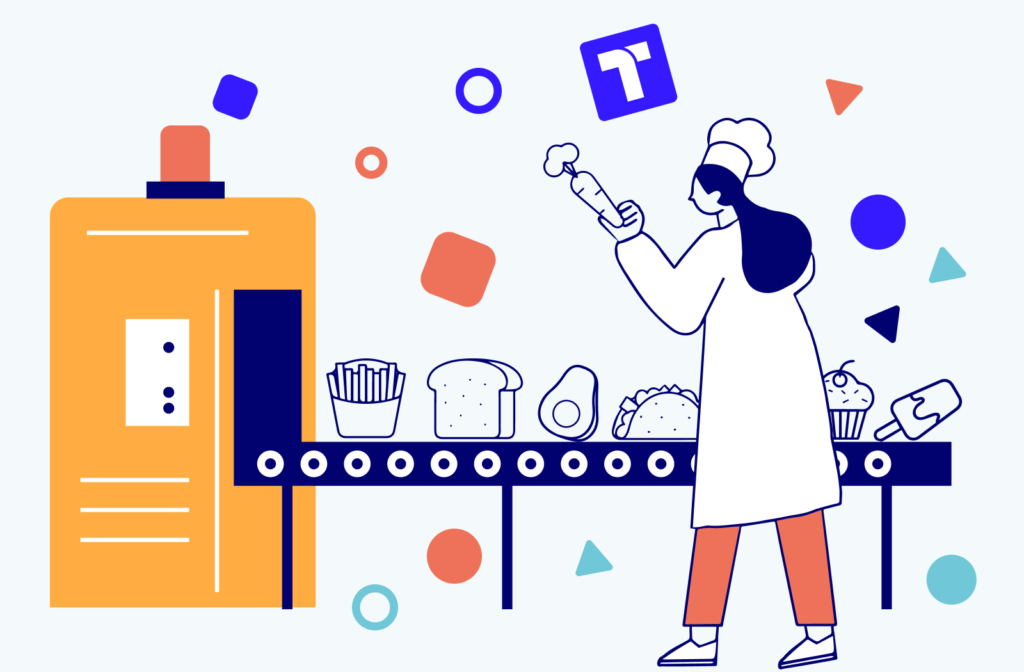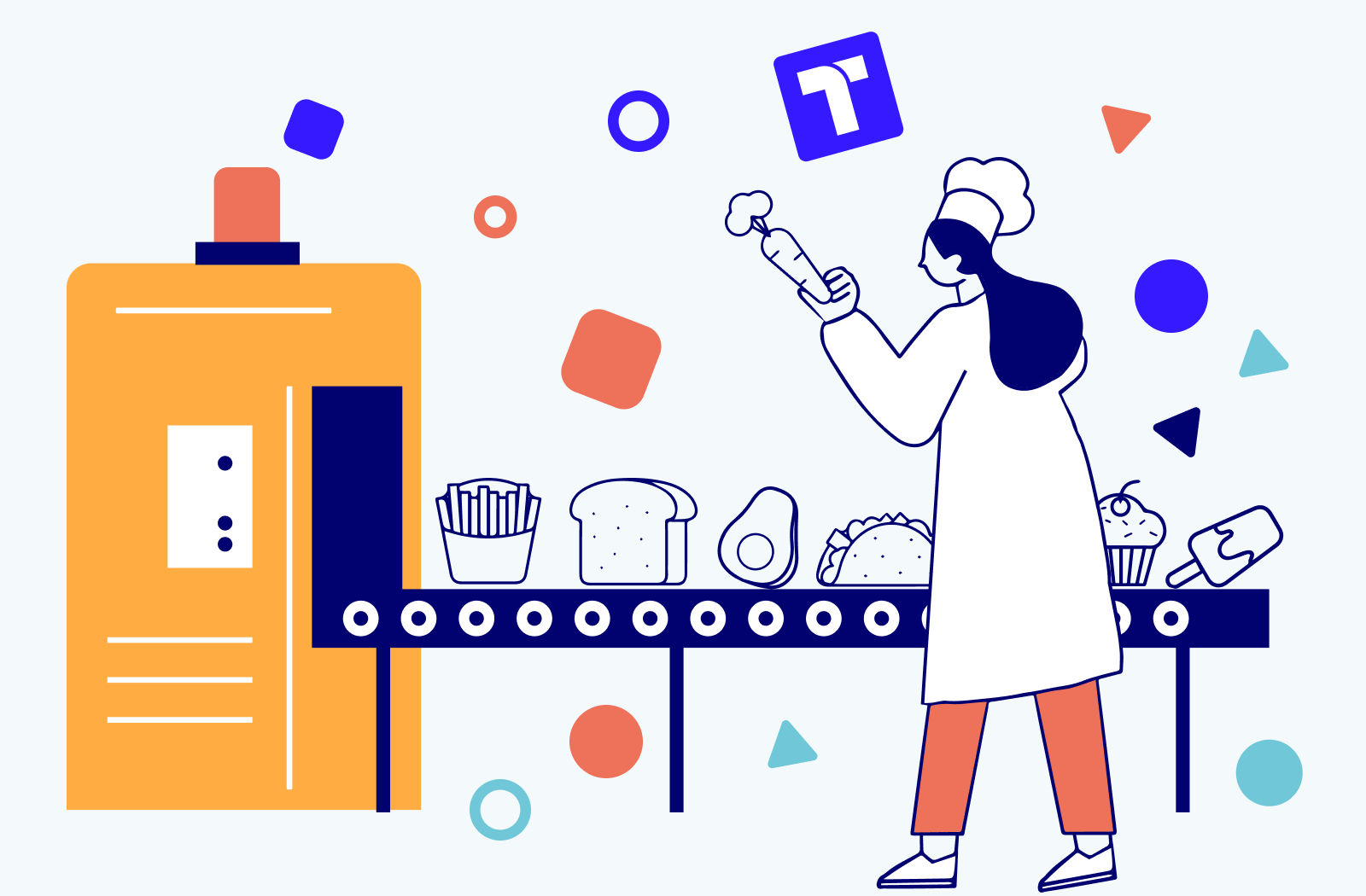
I heard this joke the other day –
’Our fruit and vegetable business recently went into liquidation. We now sell smoothies.’ 🤣
Jokes aside, the European food production industry is giant with many sub-industries, e.g. agriculture, livestock, fisheries, and food & beverage – in addition to related supply chain industries.
Food production is a huge part of the EU economy. Just look at food & beverage processing to get an idea: 291K businesses (14.1% of the EU’s manufacturing companies), 4.6 million employees (15.5% of EU employment), and 227 billion added value (12.1% of EU added value) [1].
Meanwhile, the B2C food market in Europe is expected to grow annually by 5.41% CAGR 2024-2029) [2]. Behind that growth we’d expect the B2B trade to grow as well, thus ensuring the food products are available for consumers.
Let’s look at even more interesting facts about European food production and then propose how payment terms can help food production businesses find success, i.e. survive, grow, and thrive.
Agriculture
What is the value of crop output in 2023?
The value of crop output as a percent of the EU’s total looks like this for select countries (and not all that surprising considering limitations imposed by the geographical size of the countries) [3]:
- France – 19.5%
- Italy – 13.7%
- Germany –13.3%
- Spain – 13.1%
- the Netherlands – 6.1%
- Belgium – 1.8%
How is farmland divided up?
58.2% of EU farmland is considered crop specialist. 21.7% as livestock specialist. 19.3% as mixed farming [1].
Which crops rule the roost? As of 2022, common wheat was the top crop (126+ million tonnes), followed by sugar beet (103+), and fresh vegetables (60).
What about organic farmland? By 2030, minimally 25% of the EU’s agricultural land should be farmed using organic processes [4]. As of 2021 the number stood at 9.9% and increased to 10.4% in 2022. Perhaps a slower start than expected, but “conversion” to organic farming is growing and we’re confident the EU’s farmers will meet the target. This will naturally create a larger and larger market for the trade of products needed to farm organically, e.g. feed, seeds and propagating materials, live or unprocessed agriculture products, and processed agriculture products to be used as food.
What is the EU’s approach to organic farming? Explore the EU’s policy, rules, organic certifications, support and criteria for organic farming.
How can food production be more sustainable? Check out pages 8-12 in the Farm to Fork strategy.
Are prices up or down?
6% – that’s the average percent of agricultural price decline in the EU for Q1 of 2024 YoY [5]. Cereals are down 28%. Tomatoes are down 33%. Output prices are down in all EU countries except in Greece, Spain, Malta, Cyprus and Portugal. Five countries showing the largest declines in agricultural output prices are Hungary, Bulgaria, Romania, Slovakia, and the Czech Republic.
Input prices are down in all countries except Portugal. The five countries with the largest declines in input prices are Croatia, Hungary, the Netherlands, Ireland, and Lithuania [5].
Is the fertiliser market growing?
No, it’s shrinking. The use of mineral fertilisers was down 10% in 2022 YoY, and down 15.9% from its peak in 2017 [6]. Businesses on this side of the food production industry were affected by sharp price jumps after the Russian invasion of Ukraine and subsequent sanctions [7].
Trade in the food production industry
B2B trade is our bread and butter, So, let’s look at some figures regarding food production trade, both intra-EU and extra-EU.
The EU’s total trade in agricultural products, fisheries, and food & beverage [1]:
- 68.6% between EU member states
- 31.4% between an EU Member State and non-EU country.
Exporting is big business whether intra-EU or extra-EU (in billions) [1]:
- Food & beverage products: €181 intra-EU vs. €116 extra-EU
- Animals & animal products: €125.6 / €47.7
- Crops & crop products: €119 / €47.3
- Vegetable or animal oils and fat: €31.7 / €10.8
Could some of these exporters find a way to offer deferred payment terms to their customers? Hmmm…
What about payments in the food processing industries?
‘Among the various industries in our survey, the agri-food sector across the region is especially worried about the impact of domestic economic conditions on business prospects’ [8]. However, in terms of improving customer payment behaviour (e.g. late payments), the agri-good sector is the most optimistic [8]. And, what about selling on credit? Well, the agri-food sector is the most likely to sell on credit, according to Atradius [8].
B2B BNPL and deferred payment terms for European food production
Ready to quack up? Well, it’s time for another classic joke:
A duck walks into a bar, orders a beer, and tells the bartender, ‘Put it on my bill.’
Guess what? We know ducks aren’t the only ones who want to pay later! Marketplaces and merchants trading in the food production sector find numerous benefits when they offer Terms.Tech’s B2B BNPL deferred payment terms.
For their B2B buyers:
- A chance to pay later with convenient and secure payment terms
- Rapid eligibility assessment
For the marketplaces and merchants:
- Mitigating risk because Terms.Tech takes on the burden of non-payment and/or fraud
- Reducing DSO and improving cash flow
- Increasing sales
- Improving cash flow
- Higher conversion rates and customer satisfaction levels
- Solidifying customer lifetime value
It’s time to talk to Terms.Tech, isn’t it? Get in touch with our payment terms experts here.
Sources
1 – EU’s ’Key figures on the European food chain – 2023 edition’
2 – Statista’s Food – Europe
3 – Eurostat’s DIY agricultural factsheet
4 – EU’s Farm and Fork Strategy
5 – Eurostat’s Agricultural prices decrease in first quarter of 2024
6 – Eurostat’s ‘Use of fertilisers in EU agriculture down 10% in 2022’
7 – EU’s ‘Safeguarding food security and reinforcing the resilience of food systems’
8 – Atradius’ ‘Payment Practices Barometer 2024 – B2B payment practices trends – Western Europe’



